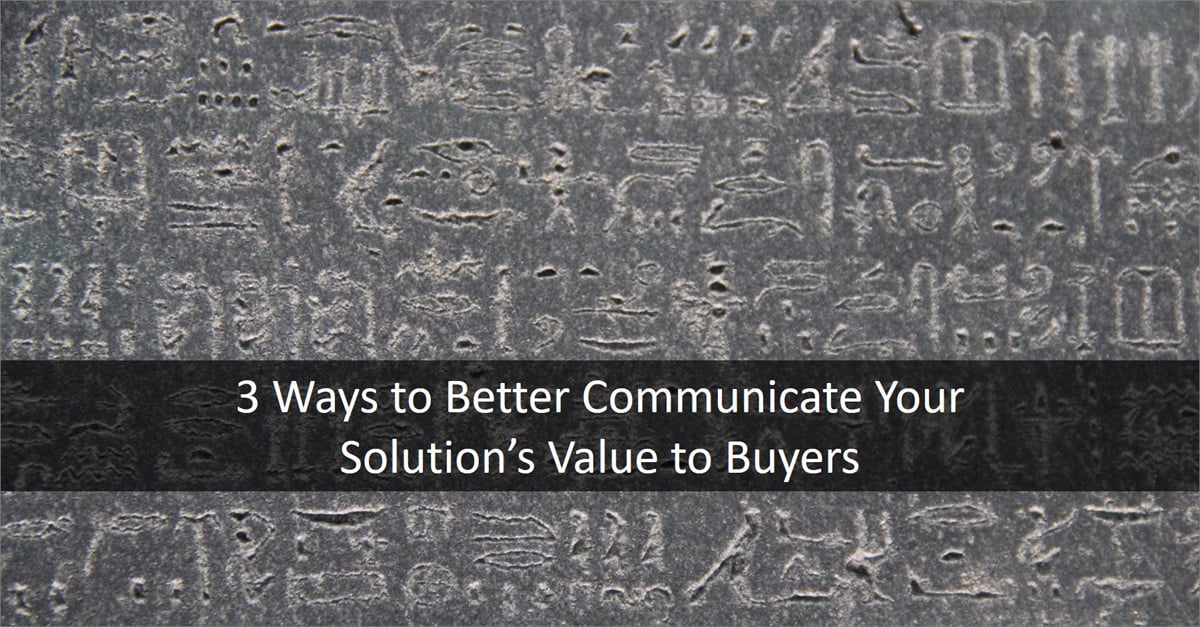
The biggest gap between sellers and buyers is a shared understanding of a solution’s value. This gap leads to long sales cycles or worse, deals that just fade away. Overcoming this chasm can be accomplished using value selling tools, which function as a Rosetta Stone to unlock insights for both sides.
Misunderstanding a solution’s value results when sellers use generic messaging that tries to appeal to everyone, but impacts few. Likewise, things can go sideways when the sales discussion doesn’t convey the solution’s value to different buyer roles. Yet another common faux pas is using internally focused language that means more to your company than to your customers.
Use these three approaches instead to better articulate solution value and achieve profitable growth.
Tailor Your Value Proposition by Customer
In 196 BC, the Rosetta Stone was carved to communicate a decree from the council of priests confirming the Egyptian royal cult of King Ptolemy V. To ensure the decree was fully understood by its constituents, it was communicated in three different languages on a single stone: Greek and Egyptian hieroglyphics and Demotic script.
Fast forward to today where every customer, even in the same market segment, communicates differently and realizes a solution’s value in different ways. Your value proposition, therefore, should be dynamic and recognize each customer’s uniqueness. Sellers can help buyers identify and quantify their problems by placing value calculators on their websites. These tools allow buyers to personalize the answer to their “why change” question.
Further down the sales funnel, sellers can use ROI tools to build a specific financial justification for each customer. This business case clearly quantifies a solution’s value for that customer in meaningful ways and provides the supporting evidence needed to obtain budget approval.
Consider Your Buyer’s Role
Just as every customer is different, so too is every buyer. Their needs and questions vary based on their role in an organization. A department head, for example, may want to know how your solution will make the job to be done easier. A general manager may instead focus more on cost savings and sales growth.
A business case focused on the role of your buyer clears the way to a concise discussion around the applicable KPIs and value drivers. Quantifying the improvement possible with your solution accelerates the sales cycle and provides buyers with the necessary cost justification.
Speak Your Customer’s Language
It’s easy to talk about your solution because it’s what you sell every day. The required recalibration, though, is to talk about your solution in your customer’s language. By this I mean both words and perspective.
Consider how your customer would describe their business and problems and how they would rank those problems. Sell the problem you solve in simple and familiar terms. Use value selling tools to show the financial impact of solving their biggest problems.
Conclusion
Follow these principles to create your own Rosetta Stone that translates your solution’s capabilities into unique value propositions for individual prospective buyers. When decision makers have a complete, real world understanding of how your solution benefits them, you are more likely to close more deals and achieve profitable growth.
Resources
Connect with David Svigel on LinkedIn.
Join the Value Selling for B2B Marketing and Sales Leaders LinkedIn Group.
Visit the ROI Selling Resource Center.









